As an Amazon Associate I earn from qualifying purchases.
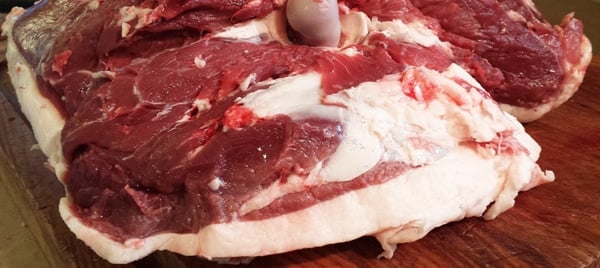
I’ve long been a proponent of using deer fat in cooking. In fact, it’s one of my more favorite hunting myths to puncture when I talk to other hunters about game cookery. After all, it just makes sense that the fat on venison would taste good, especially if you are hunting either in the Grain Belt or wherever there are a lot of acorns: Most of us like the taste of grain-fed beef, and acorn-fed pork is some of the finest in the world.
Still, the majority of sources on the subject will tell you to remove any and all fat from your deer, calling it gamy or “strong” or otherwise unpleasant. Even the normally sporty The L.L. Bean Game and Fish Cookbook, which I respect a lot, says venison fat is gnarly — but, oddly, that moose and caribou fat isn’t. Some critics skip the flavor aspect altogether and stress how quickly venison fat goes rancid, even in the freezer.
There has to be something to this, right?
Turns out, there is — to both sides of the deer fat debate. Here’s what I know about the science and composition of fat in venison, and hopefully this will help you decide whether you want to keep the fat on your deer or trim it off.
Let me start with the obvious: Deer, elk, antelope, caribou and moose are all separate critters, with different diets among species compounded by both regional differences — the menu for an Arizona cous deer is nothing like that for an Iowa white-tailed deer, for example — as well as individual differences; one buck may love acorns, while the one eating next to him prefers grass. Given this, any universal ideas about the flavor or composition of deer fat should be taken with a grain of salt. Being wild, variability is the name of the game.
Nevertheless, all our “deer” are cervids, ruminant cousins of sheep, goats and cattle. And ruminants tend to have a narrower range of flavor differences than do animals with a less intense digestive system and/or a wider diet.
Ruminants all eat grass, other plants, nuts, and only rarely animal protein; there’s that oft-quoted story about deer eating baby birds or eggs. Contrast that with ducks and bears and wild pigs, which can run the gamut from abominable to sublime depending on what they’d last been eating. A salmon-eating bear is foul, a berry-eating one fantastic. Deer are deer, with real but more subtle differences in flavor.
OK, you’ve shot a deer. Now what?
First off, when you gut the deer you will see a skein of lacy fat surrounding its entrails; this is caul fat, and it is fantastic for making crepinettes or British meatballs. (More on that in another post.) I save it, vacuum-sealing it and freezing it straight away.
Next you will often see a lot of fat around the kidneys as well as some stuck here and there within the gut cavity. This is suet. I tend to toss it. Why? Rule No. 1: Body cavity fat (suet) is always harder than that on working muscles. If you are a soap or candle maker, this stuff is golden. If you want to eat it, well, it’s really waxy and won’t melt until it hits about 120°F.
By comparison, rendered wild duck fat melts around 68°F. Some people like beef and lamb suet, but not me. Birds really love it, though, especially in winter. So if you live in a place with cold winters, save your deer suet for them.
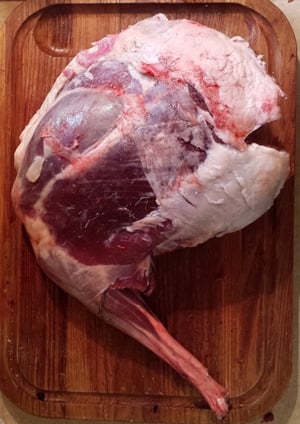
Question: Are you hanging your deer or not? This is a big one. If you intend on hanging your deer in the hide, you can still use the fat. Not a lot of people do this because it requires very cold temperatures. If, like most people, you hang your deer after it’s been skinned, you probably want to trim off at least top layer of fat. The reason why gets us into what venison fat is made of.
Good data is hard to find on this subject, but it does exist. I managed to read about a dozen scientific papers on venison fat — yeah, I know, light reading, right? — mostly from New Zealand, Scandinavia and Great Britain, although there were a few from the United States, too. They all come to the same conclusion about deer fat:
- It is high in Omega-3 fatty acids, due mostly to a diet of grasses.
- It may have the highest levels of stearic acid in any food animal, for reasons not entirely clear.
- Deer fat is more saturated than fat from beef, lamb or pork.
Saturated fat is bad, right? Yes, but the kind most people are talking about is palmitic and myristic acid, which are present in all ruminants, including deer. As it happens, stearic acid is an anomaly. Diets high in stearic acid actually decrease the “bad” cholesterol levels in people and may even increase the “good” cholesterol, too.
At the very least it’s cholesterol neutral. Beef has some stearic acid, lamb more. But you know what has even higher levels of it? Chocolate. Crazy, eh?
So, back to the question of hanging your deer. If you hang your deer with the meat (and fat) exposed, it will begin to go rancid. The reason has to due with temperatures above freezing, exposure to the air, which causes oxidation, and because fats high in omega-3 fatty acids tend to go rancid easier. This is why people say venison fat goes rancid quickly.
The quicker you can cool the deer carcass and the faster you can get the meat away from oxygen and into refrigeration, the better tasting the fat will be, and the longer it will keep in storage.
A word on taste. Flavor in deer fat is all about meat care, which we just discussed, and diet. A deer that had been pillaging an alfalfa field or a cornfield will have fat that tastes a lot like beef or lamb fat. A deer eking out a living in the Great Basin or the desert might not have any fat at all, and what fat there it may well taste unpleasant. How can you tell? Render some in a pan with a little water, and if it smells good it is good. Your nose doesn’t lie.
That said, fat is the primary carrier of individual flavor in animals, not lean meat. I can feed you a series of meats, and if they are all cooked the same way and are all devoid of fat, they’ll all taste similar. Color and texture are your only clues, and if you blindfold someone it will become virtually impossible to tell the difference. Don’t believe me? Try it on your friends. You’ll be surprised.
Venison fat has flavor. There, I said it. If you like the flavor of lamb or beef fat, you’ll like venison fat. Period. Others might find it too strong for them. And that’s fair, but I am betting it isn’t the flavor of the fat that’s got them. It’s the mouthfeel.
And this brings us to the final issue with deer fat: It can coat your mouth.
Blame that stearic acid. You know why you love chocolate so much? One big reason is because that lovely flavor coats your palate. Only when it’s deer fat the experience is something else entirely, and not altogether pleasant. A little is fine, largely because it carries that nice venison flavor.
But when I make sausages from 100 percent venison, they taste fantastic but I find I need to drink something acidic, like red wine, to cut that coating. Is it a stopper? No. But it’s something to be aware of.
So. Bottom line. If you want to eat your deer fat, I’d follow these guidelines:
- Save it from deer that had been eating nice grasses, grains or acorns. Remove it in deer from sagebrush or sketchy areas.
- Toss the suet unless you want to make candles, soap or feed the birds.
- Slice off any fat that was exposed to air after you’ve hung the carcass.
- Never use deer fat in dry-cured salami. Uncooked deer fat is nasty and chalky.
- Use deer fat sparingly in sausages and burger. A little adds a lot of flavor, a lot can give you that “coated mouth” thing
- Eat cuts with a lot of venison fat, burger or sausages made with venison fat within 3 to 6 months, as the fat will go rancid slowly even in the freezer; it’s a little like salmon fat, which, when thawed, gets that nasty smell we all hate…
- Venison fat crisped on a roast or steak is awesome. Period.
Hope this helps you out this deer season! What have your experiences been with deer fat?
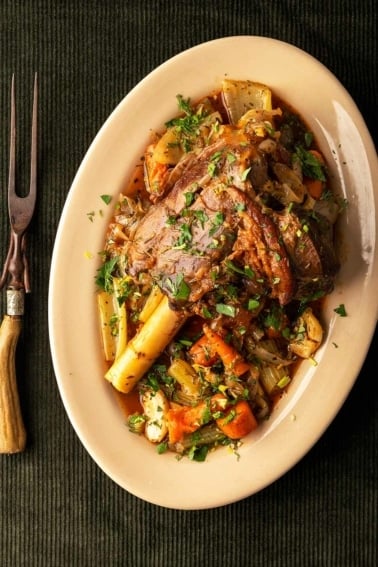
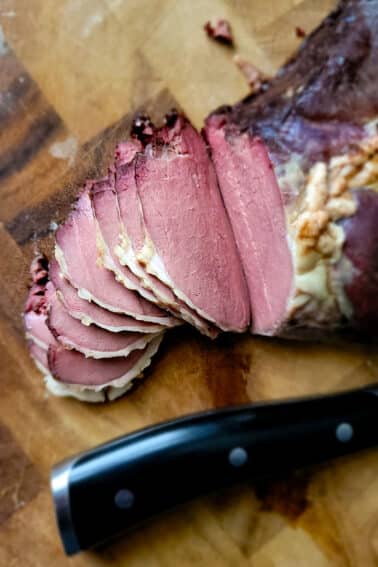
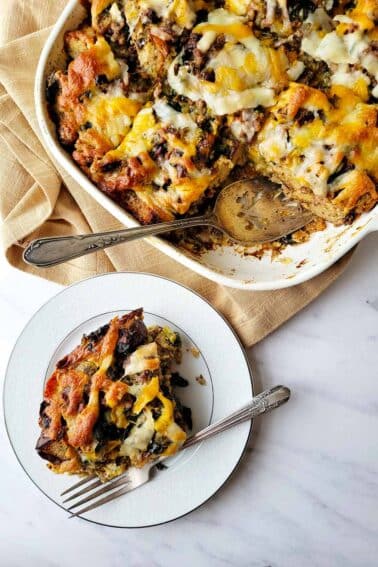
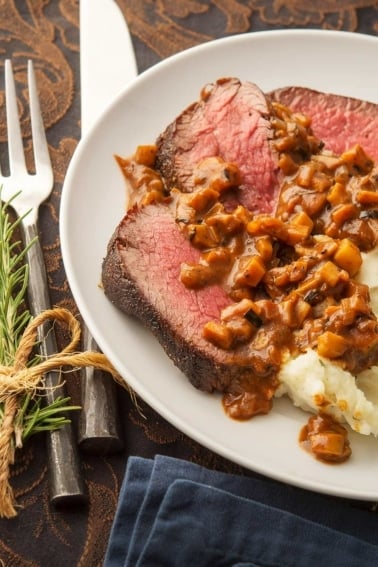
This article opened my mind a little to the prospect of eating more of the fat. I for one don’t like the waxy mouth feel. This can be a, (solvable), problem when making a neck roast for example. I feel that the majority of the undesirable gaminess that people talk about really comes from the silver skin rather than the fat. That being said, your shank recipes really solved that problem too! I was pleasantly surprised about the omega 3s and stearic acid, great research! Just like with the silver skin, I’m sure that it lends itself to certain techniques and recipes better than others but hey, there’s another trick for the arsenal! Thanks Hank!
Also, properly rendered, the suet type fat could be put to great use as in the crust of a savory pie where it’s hint of meatiness might be welcome.
Hank, you mentioned that you stay away from fat around the non working muscles because it’s too waxy. Do you think that this waxy fat would be favorable in rendering for pemmican? Maybe it will bind the meat together better?
Bryan: Not sure. Only one way to find out… 😉
Wow! Great details and advice. Thank you of taking the time to write this.
I’ve tasted the stearing fat on doe ribs. Boiling the ribs for 30 minutes before slow cooking them helps. But it does not eliminate the coating. Thankfully istsis a minor issue relative the ribs taste.
I rendered fat from a doe this year (touch of water and low heat). Poured out into baking sheets to set when cooled down, broke into amounts that seemed usable and then vacuum sealed. We have been using in biscuits and it is great.
might try grilling a roast with fat but when i render it down in the pressure cooker to make tallow it stinks horrible and then the wife makes me cook it outside. doing a batch now from a deer a shot that had so much fat i’ve never seen so much fat on a deer(doe) and added cloves and cinnamon to kill the smell and it worked!
I wish the myth that eating saturated fat is bad would go away. If you eat a lot of simple carbs and or sugar, your body will turn those carbs into saturated fat and store on your body. The same thing happens to cows, pigs, chickens etc. That’s why farmers fatten their livestock with grain. But eating saturated fat without simple carbs has never been shown to cause ANY problems.. Red meat consumption has plummeted since the 1970’s and obesity, cancer, heart disease, diabetes and Alzheimer’s have all skyrocketed. Cutting out saturated fat to improve health is like trying to avoid lung cancer by breathing less. Eat the fat- enjoy it. Cut the processed carbs and sugar. PS- deer jerky with the right mix of cow and deer fat is one of the best-tasting foods on the planet.
Keith: Oh I don’t think saturated fat is bad per se, but this fat is SO saturated it causes weird mouthfeel issues, so my issues with it are less dietary and more culinary.
The health problem is most likely from unsaturated fat, aka vegetable oil. Carbs may not be such a problem.
Great article on deer fat.
Have you ever explored the effect of icing the carcass? Here in south Texas, many people quarter their deer and cover it in ice for about three days before further processing, draining the water each day and adding ice as necessary. That’s the way I was taught, anyway. The theory is that the ice water bath leaches the “gaminess” out of the meat.
I don’t mind venison that tastes like venison, instead of beef. But I still ice my deer carcass. Is there any benefit? Is there any harm?
Thomas: Yes, that does do that, but I don’t like the pale, flavorless meat that results. It’s a matter of taste, though. I like my venison to be fully flavored.
This was hugely helpful! My dad always swore off the venison fat but there is a lot I convinced him to do (age that deer, dad!) and I was always wondering about this. Most of our deer came from Montana (and now I understand avoiding the fat) or Michigan (corn fed and we should have tried it). Thanks for all of this!
Like many people I was taught that deer fat tasted bad. But I’ve grown to like it just as much as beef fat. I don’t like huge amounts, but I certainly don’t cut it off carefully like I was taught to do. Now I usually leave it on the steaks and roasts. I can tell by the smell when I’m first cutting into the dear, fresh and warm, if the fat will be good.
I guess its like liver. Something that you like, or find so repulsive that you can’t have even a bite… I’ve saved the caul fat and wrapped meatballs in it, cooked venison ribs on a grill and smoked in a smoke cooker, had cuts grilled with some fat. Ugh! It tastes great but that coated mouth wax is just horrible.
I’ve tried it out on others and have yet to see one person say they’d choose to eat the stuff.
I admire the folks who like it since I hate waste, and I LOVE fat. Bear fat, goose fat, wild pig fat. Love em. The poor venison? Nope.
I grew up thinking deer fat was bad, but I’ve learned a lot since joining this group. Thanks for the great info!
I do deer ribs, which makes me an anomaly anyway. As long as the deer fat is relatively fresh and warm/hot, it is fine. When it cools, it gets that unpleasant waxy mouth coat.
Hello,
I have a question. I use the venison back fat. Cut off a slice, add it to a hot pan. Then sear the meat or venison loin in this fat. Is this a good way to use the fat instead of other oils for searing?
Thanks for the comments.
Ryan: Yep, you can do that, but make sure to eat the loin piping hot and rare — if you let it rest, the fat will congeal and it won’t taste good.
With the excess fat from deer and sheep, along with the fat from around the kidneys, I render it down and make my own suet for birds in the backyard (and squirrels, which end up in the freezer). I’ve never had an issue with rancidity as it disappears fast enough before it has a chance to turn.
Just a comment of variable appreciation here.
Not sure if I’ve ever been on this site (probably), but I have to say, first and foremost, I appreciate your writing style. Excellent communication of ideas and mental images.
I’m also appreciative of the majority of folks who apparently learned proper english grammar and sentence structure. Overall, it makes reading and following instructions and conversations a smooth, enjoyable pleasure. So, I thank you, Hank, as well as the educated folks who have written questions and responses.
Warm writing fuzzies aside, I appreciate your efforts in research, as well.
Too often, someone will opine that one should never do such and so, with no good reason or rationale, but rather, based on hearsay and/or their own miserably failed single attempt. Thank you for gathering and garnering as much mitigating information as possible AND….allowing the reader to “choose” which avenue they take, based on varying information you have provided. Most excellent approach to conveying what you’ve learned.
And finally, I’ve locked in this website. While I’m almost exclusively a deer hunter, I’m also interested in other types of game, but don’t hunt them, only because I’ve not found acceptable recipes. I believe I’ve found a source I can trust, so will be expanding into other realms….first up will be squirrel.
Thank you for an outstanding website; I’ll be spending a bit more time here in the near future!
Hey Hank. I know this is random, but I’m a soap maker, and was recently gifted a bunch of deer fat to use in soap (at my request). There is this great online calculator that helps you figure out how much lye you need for pretty much any type of fat or oil, and gives you the fatty acid break down of each oil. Soapcalc.net. Animal fats are listed under tallow (except for pig, which is listed under lard). So tallow, beef. Or tallow, deer. Turns out goat tallow has more stearic than deer, and is higher in saturated fat overall. Deer is quite high in linoleic, and I know from working with other oils high in linoleic that it is a fatty acid that goes rancid quickly. So my guess is that its the linoleic that goes off so quickly in deer.
Jennifer: Fascinating! I don’t know about the stearic in goat fat – I looked up a lot of science on this. But that’s a great point about the linolic acid. Thanks for that!
Eddie – it’s crazy that you mention this as I was just looking for Hank’s post on venison fat as I have figured out a great use that works for me. I rendered the fat into suet in my crockpot (many websites explain how with pork and beef fat). I tried the rendered fat and like chocolate it coated my mouth but of course “not in a good way”.
So as an experiment I made a standing crust pot pie. This was a Melton Mowbray type pork pie and was very common in colonial US and came from the UK. I used 18 ounces of rendered venison fat in 2.25 pounds of flour to make the dough (check out the standing pie crust on YouTube from Jas. Townsend and Son, Inc. to see how or Google it). All I can say is that the coating on my tongue and mouth is not readily apparent. Sure there may be a tiny bit as compared to butter or lard. But not doing a side-by-side comparison I don’t detect it and certainly can say there is no strong gamey flavor.
So there is a cooking use for those who want to bother
You know, I’d bet that hard kidney suet would be good for making into pot-pie doughs. Venison pot pie dough, of course, after you rendered it down…